Culture
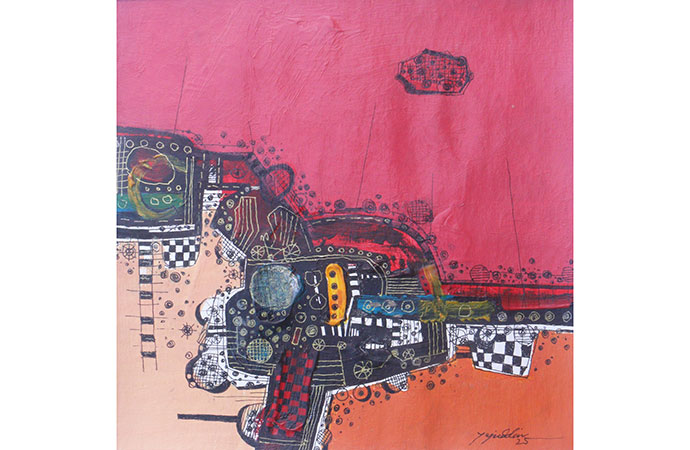
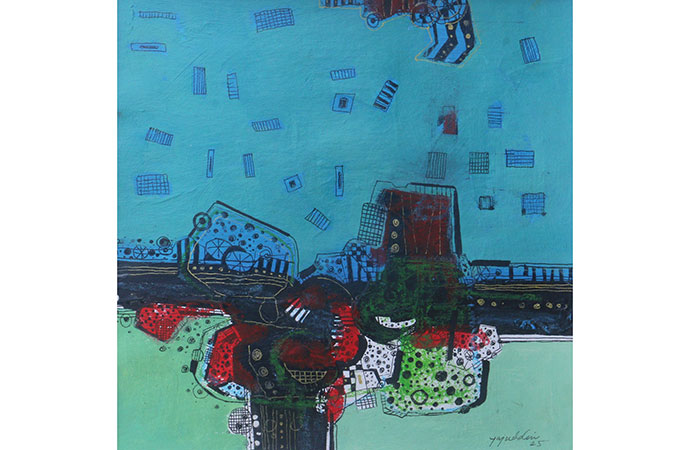
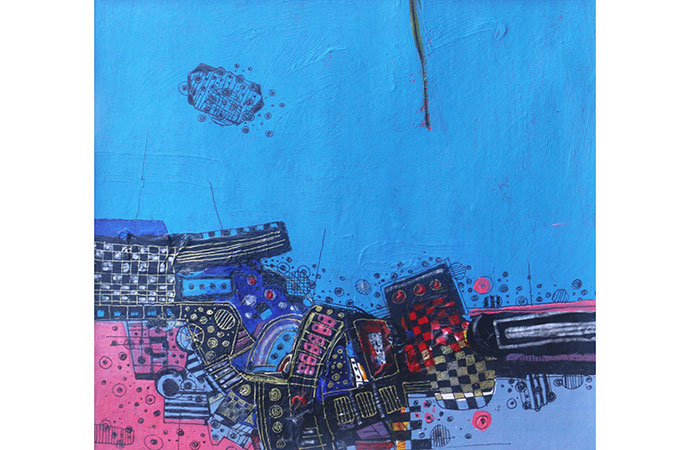
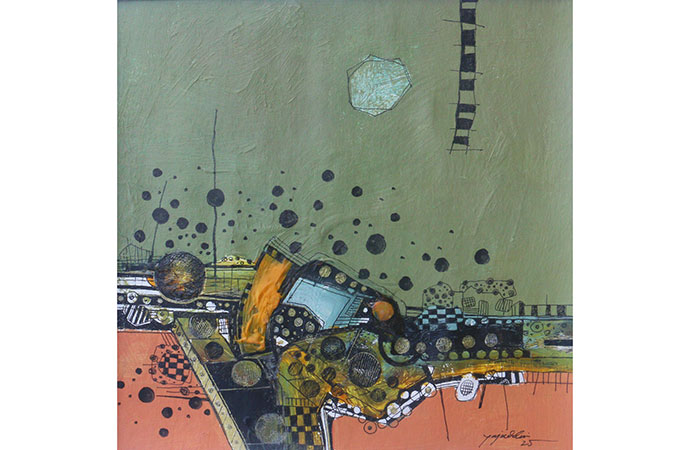
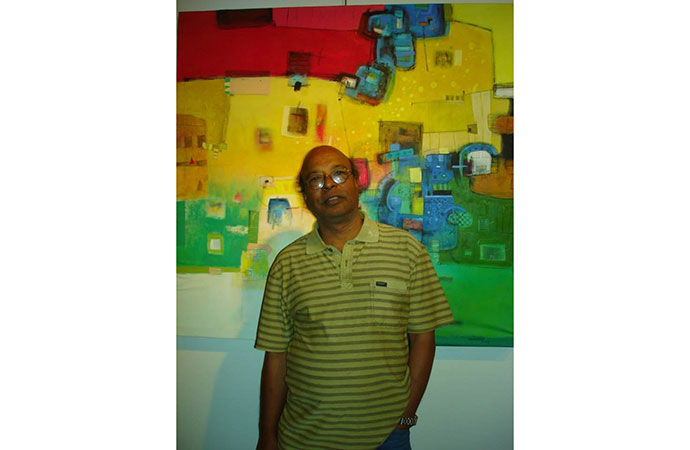
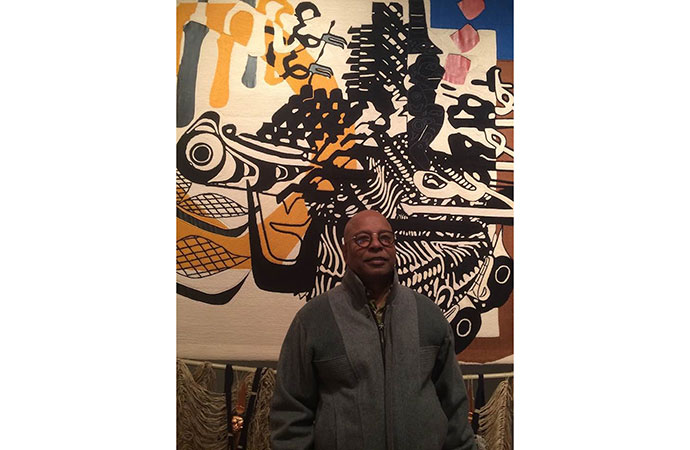
To discern the unique signature of artist Tajuddin Ahmed, who has resided in Toronto since 2008, it is essential to examine his current artistic practice within the framework of the abstract movement in the country, which originated in the early 1960s. What sets him apart from the first generation of abstractionists is his innovative use of layers. Beneath the tactile quality of his creations lies a meticulous process of layering paint to delineate forms and shapes-his aesthetic objects. As he persistently adds further layers of drawings onto the canvas until he believes he has fulfilled his artistic vision, his works often appear to have a tenuous connection to urban reality. The deliberate arrangement of colours and spatial elements infuses his pieces with a dynamism that readily captivates the attention of art enthusiasts.
Tajuddin's latest creations present a polished interpretation of the visual logic he has utilised since the 1990s. However, these recent works differ to a certain degree from his previous explorations. Currently, his canvases are filled with small object-like shapes of various kinds. Additionally, myths, symbolic motifs, and evocative forms emerge within his predominantly abstract painted areas, which are prepared with coarse textures.
Tajuddin's artwork exemplifies his departure from the thick impasto technique characteristic of his earlier pieces. In many of these new works, the use of texture has softened, resulting in a surface that appears more calming than it has in the past. The emotional connections to his childhood environment - the city of Dhaka, which has been marred by unregulated development - have somehow paved the way for universal themes that encompass compositional harmony and vibrant colours.
Unlike his primary body of work, there are several pieces that reveal his affinity for the folkloric. The incorporation of human figures alongside floral designs, as well as hints of plants, birds, shrubs, and animals such as elephants and horses, creates a remarkable setting for engaging with Tajuddin's creations. A playful imagination is evident in many of his pieces, although some appear deliberately tidy and serene, emphasising the use of colours and their intricate layering. In certain works, the colours seem somewhat flat, lacking in tint or shade.
I have known Tajuddin for over twenty years as an abstract expressionist, a skilled and perceptive observer. I am profoundly impressed by the breadth of his works, his compositions, and the manner in which he conveys his inner thoughts and the surrounding environments. He is also remarkably bold and exhibits strong control over canvas and large sheets of paper. He never hesitates to work with large canvases. For him, a large canvas provides the opportunity to express himself effectively. Tajuddin has experimented with various mediums, and his mode of expression is distinctly rooted in pure abstract expressionism. I believe Tajuddin is an exceptional painter due to his sincerity, thorough observation of subjects, and, most importantly, his unpretentious approach.
Tajuddin stands out as one of the leading painters of the late 1970s, having commenced his formal career as a semi-abstract artist. His themes encompass urban landscapes, enigmatic nature, yearning, and emotional expressions. During the late 1970s, his artwork was characterised by a profound engagement with figures, objects, and spatial relationships, employing bold and sweeping brushstrokes. He experimented with texture and illusion to achieve surface effects. Although some colours in his works from that era appeared flat, he successfully created a sense of space on the canvas. The tonal-plus-linear technique imparts a unique quality and distinct appearance to his works from the very beginning.
In the late 1980s, Tajuddin emerged as a genuine naturist painter. During this period, he drew his inspiration entirely from nature. This influence is clearly reflected in his artworks, which capture the beauty of both rural and urban landscapes. His style of expression at that time was semi-realistic, infused with elements of impressionism and post-impressionism. He possesses a remarkable ability to portray the philosophical dimensions of nature, as well as its volume and colour, resulting in poetic compositions. He believes that rhythm is the fundamental essence of all creations. Nature itself has a distinct rhythm, and his primary objective is to reveal the underlying pulses of nature.
Over time, Tajuddin has refined his skills. After the 1990s, he evolved into a semi-abstract painter and embarked on a rigorous interpretation of metropolitan communities through thematic exploration. He closely examined the city's unplanned urbanisation, the deteriorating wealth of heritage, transportation systems, and the shifting socio-political and economic landscapes. To draw deeper inspiration and introduce variation in his theme-centric works, the artist passionately portrayed Old Dhaka, capturing its lively activities, the struggles of its marginalised citizens in their daily routines, rickshaws along with their unfortunate yet resilient drivers, streetlights, narrow lanes, densely populated areas, dilapidated structures, and tangled wires stretching across the streets. He also illustrated crowds of people engaged in various pursuits, influenced by their sufferings, challenges, joys, and ecstasies. Primarily working with oil paint, he found that this medium provided him with a genuine sense of continuity. The beauty of oil paint lies in its ability to achieve buttery textures, delicate luminous glazes, and unparalleled rich colours.
Tajuddin's artwork from this era (he later continued to explore similar themes) prominently features wheels, prostitution, and recognisable aspects of the city. Over time, figures gradually diminished in his pieces, making way for a variety of forms, symbols, textures, and shapes such as ovals, triangles, and rectangles, along with lines that dominate the canvas. Geometric designs and architectural perspectives provide a fresh viewpoint on his creations. Elements like adjoining columns, slabs, walls, fragmented pillars, elephant shapes, compasses, broken doors, windows, and more are also evident in his art. His canvas serves as a true reflection of our contemporary urban environment.
Following the late 1990s, Tajuddin finalised his artistic evolution, establishing himself as a pure abstract expressionist painter. His artwork explored the depths of pure forms, compositions, and colours, which were utilised in accordance with the surrounding space. At times, he engaged with precise forms and compositions, frequently immersing himself in gracefully curved horizontal and vertical lines, straight lines, elliptical and non-elliptical shapes, cubic structures, and rigid frameworks. He manipulated space, and at times, the space itself played a crucial role in many of his artworks. Occasionally, forms captivated either the middle or lower sections of the canvas. There were moments when it appeared he was particularly aware of the interplay between space and forms. The implementation of forms imparts a cerebral and reflective quality to his creations. His works are notably expressive, attributed to the skillful use of space in his paintings during this era. Throughout this period, many paintings showcased intricate compositions, textural depth, and richness of colours. Several of his pieces appear orderly and serene, as they concentrate on colours and their diverse layers. The palette includes azure, crimson, red, black, white, yellow, cobalt blue, yellow ochre, purple ochre, burnt sienna, umber, and emerald green. The artist has experimented with texture and illusion to create surface effects, resulting in surfaces that are more striking and captivating.
Several pieces by Tajuddin illustrate his affinity for folk art. He occasionally incorporates human figures alongside flowers, small plants, birds, elephants, horses, small bushes, and various animals. Each piece conveys a comprehensive narrative that conceals our identity. In certain artworks, flowers and animals such as horses and elephants are featured. The paintings possess a primitive quality while simultaneously exhibiting a modern execution. The line work is straightforward yet unrefined, providing nature with a genuine illustrative representation through his art.
Throughout the years, Tajuddin has adapted to technical and methodological advancements, utilising them to enhance his abilities as a creative interpreter of nature and human insight. He has symbolically documented every facet of life in his environment, thereby affirming his sharp observational skills in examining socio-economic, political, and cultural aspects in all their forms.
The writer is an art critic and cultural curator.







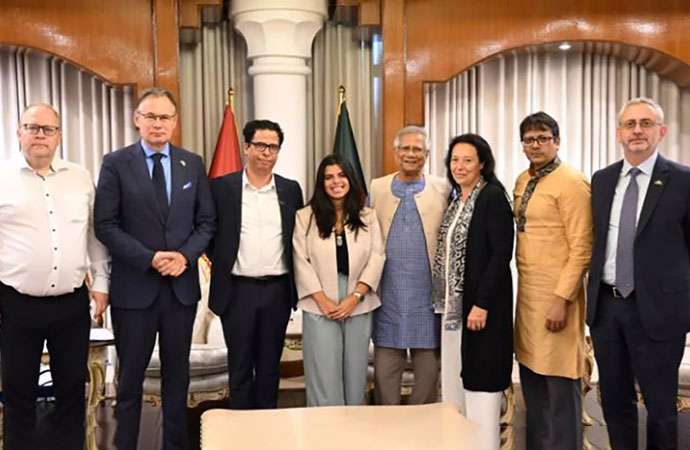




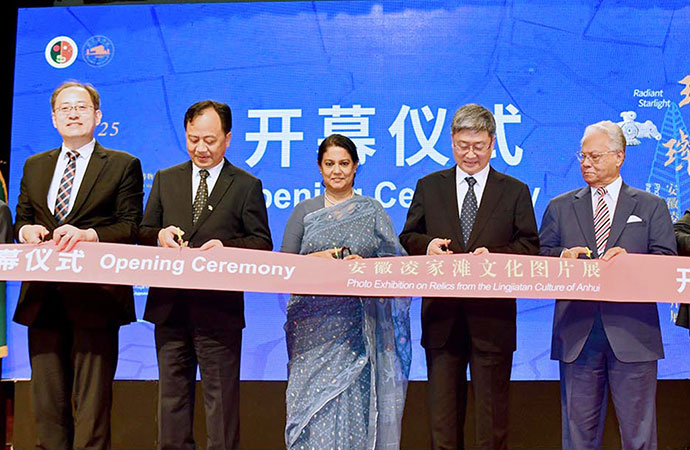
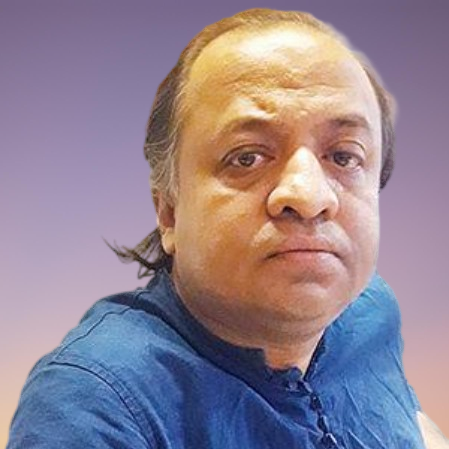


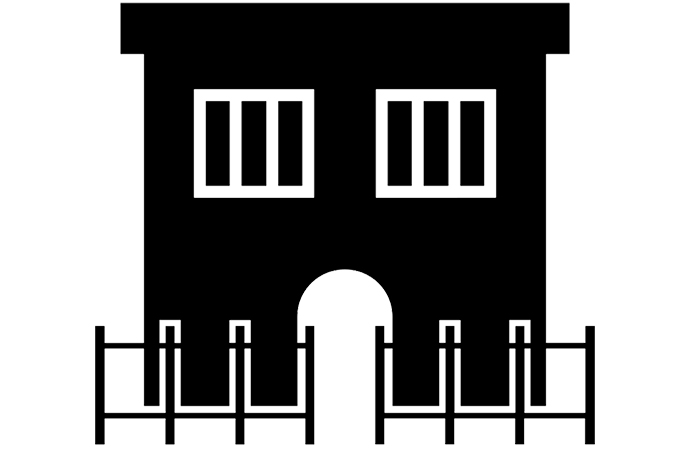


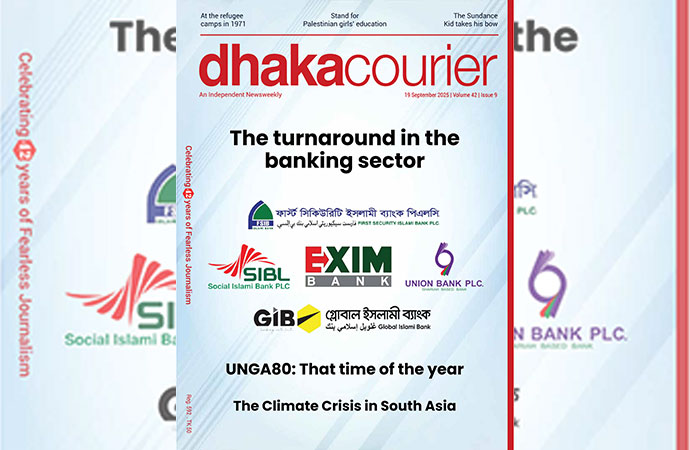
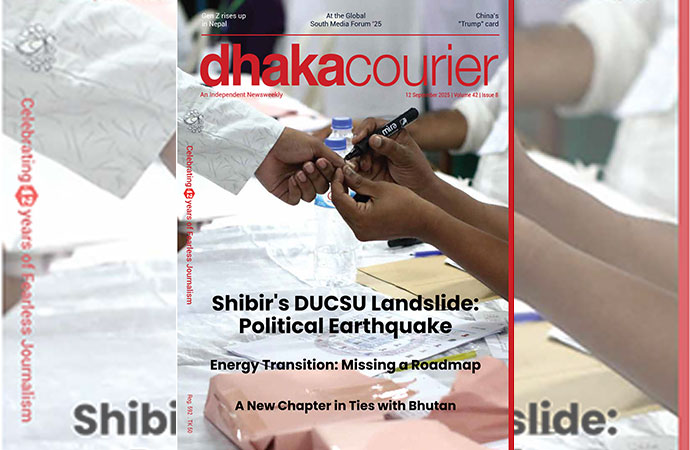
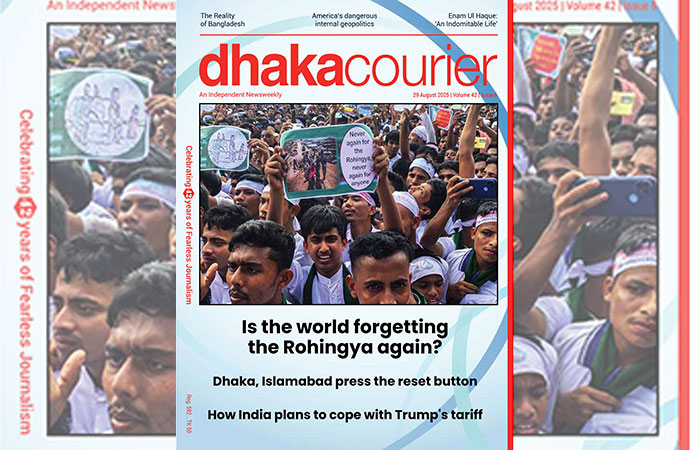

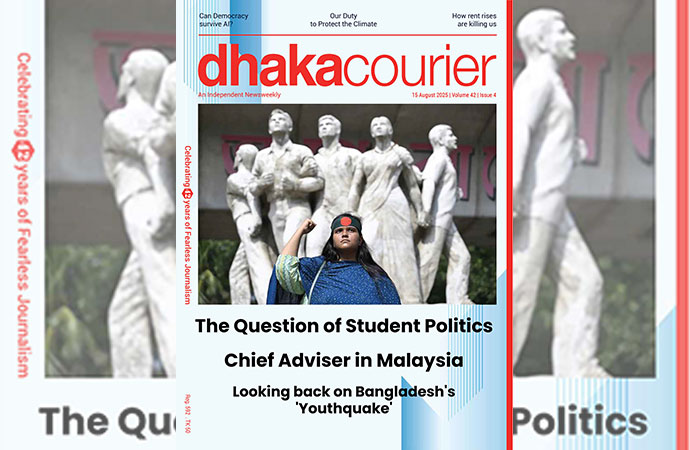

Leave a Comment
Recent Posts
HAISON Celebrates 10 Years of ...
HAISON International Ltd, founded by M Jalalul Hai, has made its mark ...
How to own an Uprising
One of the few constants of these last 13-and-a-half months has been t ...
The climate crisis in South Asia: The future of stat ..
February polls to be peaceful, festive despite attem ..
The blend of impulsiveness and understated abstracti ..
Five ways the state failed during Gen Z protest